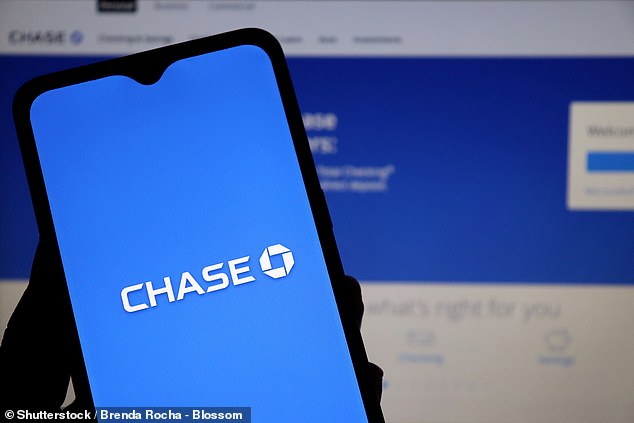Chase Bank has made another change to its 1 per cent cashback current account offering, creating a bigger hoop to jump.
The cashback deal has been immensely popular since the US giant launched in Britain in 2021, seeing millions open the account to get it.
The digital bank, part of US giant JP Morgan, has always had a 1 per cent cashback offer on the account – which was previously uncapped.
Last year, it created a £15 per month maximum limit on how much cashback could be claimed – and now, it has added another caveat.

Changes: Soon, Chase customers will need to pay £1,500 per month into the account to get the 1% cashback
To get the cashback deal, customers need to pay in £1,500 per month. Previously, £500 per month had to go into the account in order for the cashback to be paid.
Experts say the new monthly amount is likely to be a move in order to entice more customers to not treat it as a secondary account, but rather their main account.
Those who have had Chase for more than a year will soon need to meet the criteria to keep getting the cashback.
Those who have had an account for under a year, once the 12 month period is up, they will be required to pay in £1,500 per month.
Those signing up today will get the cashback with no monthly amount required to go into the account – and then, after a year, the £1,500 per month applies.
For the first time, customers will be able to pay the £1,500 a month into a Chase round-up saver if they wish rather than into the current account to qualify for the cashback. You have to have a Chase current account to open a round-up saver.
To be able to pay £1,500 into the account a month, many will have to get their salary paid into their Chase account – making it their primary account.
James Blower, founder of website Saving Guru says: ‘Chase is likely finding that many of its customers are using it as a secondary account, rather than a primary one.
‘That is, they are keeping their existing bank account but transferring some money to Chase to spend on the card, using it like a prepaid card.
‘This is something that other new entrants, like Monzo, found in the early days.
‘This change is likely designed to incentivise more customers to have their salary paid in and use Chase as their primary account and as well as higher value savers who can meet the threshold by putting larger balances with Chase, which at their current rate of 4.1 per cent are potentially very profitable for them.’
More than a third of Britons now have a digital-only bank account, but exclusive research for This is Money from Finder found that many people are using them as a secondary account, rather than their main current account.
In the first nine months of 2023, digital banks saw a total loss of more than 25,000 accounts via the switching service.
Monzo lost nearly 20,000 more customers than it gained, while this was 4,631 for Starling.
In comparison, some of the high street banking names have seen a switching glut. For example, NatWest gained 59,158 switchers between July and September 2023, and HSBC (which includes First Direct) 25,037.
Challenger digital bank have reeled in millions of customers by offering fee free spending abroad, Finder says.
While many customers opened a Chase account for its cashback offer. Customers can earn up to £15 per month with Chase’s monthly cashback offer working out at up to £180 of cashback over the course of a year.
For some, the new cashback minimum monthly pay in may be too much.
Andrew Hagger, founder of website MoneyComms says: This move from Chase will be a blow to some of its customers with an increased credit funding requirement of £1,500 per month, and it may prove unaffordable for some people who may end up switching elsewhere.’
Victoria Tilney, head of daily banking at Chase, said: ‘Chase’s 1 per cent cashback on everyday debit card spending continues to be hugely popular with our customers, in large part because they can earn a bit extra on many of the things they already buy every day.
Some links in this article may be affiliate links. If you click on them we may earn a small commission. That helps us fund This Is Money, and keep it free to use. We do not write articles to promote products. We do not allow any commercial relationship to affect our editorial independence.



